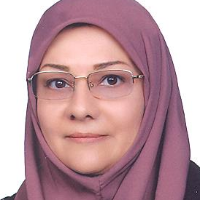Translation, Cultural Adaptation, and Validation of Psychometric Properties of the Parent Section of Parent-Child Interaction Coding System
Most of the tests regarding parent-child interaction have dealt with this issue from the emotional-behavioral point of view; however, studying these interactions from a combined verbal-behavioral aspect requires a tool consistent with Iranian culture. Parent-Child interaction coding system–3rd edition (DPICS-III, 2009) is allotted to evaluate parent-child interaction. This study was conducted on mothers of 3- to 6-year-old children to translate, adapt to the Persian language, and determine the validity and reliability of the parent section of this test.
This research was descriptive-analytic with a non-experimental design. This test was adapted to the Persian language, and its face validity was examined to clarify the items. Moreover, the correlation between live and video observations of 10 mothers and children was evaluated to determine the validity of observations. Later on, the same rater reviewed the videos of 10 mothers—recorded for the correlation between live and video observations—again within a week for intra-rater reliability and verify the credibility of the rater. Moreover, the Spearman and interclass correlation coefficients were used to determine inter-rater reliability. Data analysis was done by calculating ICC, the Pearson correlation coefficient, and the Spearman correlation coefficient.
The translation process led to an appropriate version of the test in Persian language. The Pearson and Spearman correlation coefficients were used for analysis. The correlation between live observation and video was significant (P<0.05, 1-0.74=spearman and P>0.05, 0.99-0.83=Pearson). The reliability of intra-rater was also high (P<0.05, 1-0.89=spearman and P>0.05, 0.99-0.87=Pearson). Furthermore, inter-rater reliability was also high (P<0.05, 0.99-0.81=spearman and P<0.05, 1-0.79=ICC).
According to the study results, the parent section of DPICS is applicable in the Persian language with appropriate validity and reliability. This applicable test is either as live observation or video recording, with no differences
-
Developing the KHANA Test to Evaluate Reading Skills in Persian-speaking Students: A Preliminary Study
Talieh Zarifian, *, Reza Nilipour, Shahin Nematzadeh, Narges Bayat
Iranian Rehabilitation Journal, Dec 2023 -
Evaluating the Validity and Reliability of the Knowledge, and Practice Questionnaire of Iranian Mothers About the Development of Persian-speaking Children Aged 18 to 36 Months
Zahra Valitabar Kerati, Morteza Farazi*, , Fatemeh Jazem, Majid Jannat
Iranian Rehabilitation Journal, Sep 2023 -
Consistency between Schedule for Oral-Motor Assessment – Persian and Fluoroscopic Barium Swallow Study
Manijeh Zarei Mahmood Abadi *, , Mehrzad Mehdizade, Lida Sharifi-Rad, Enayatollah Bakhsh
Journal of Rehabilitation Sciences and Research, Dec 2023 -
Comparison of the Effect of Four Transcranial Direct Current Stimulation Configurations on Picture-Naming Improvement in Non-Fluent Aphasia: A Randomized Clinical Trial
Bahareh Rezaei *, Anahita Khorrami Banaraki, , Mehrdokht Mazdeh
Iranian Journal of Medical Sciences, May 2023



